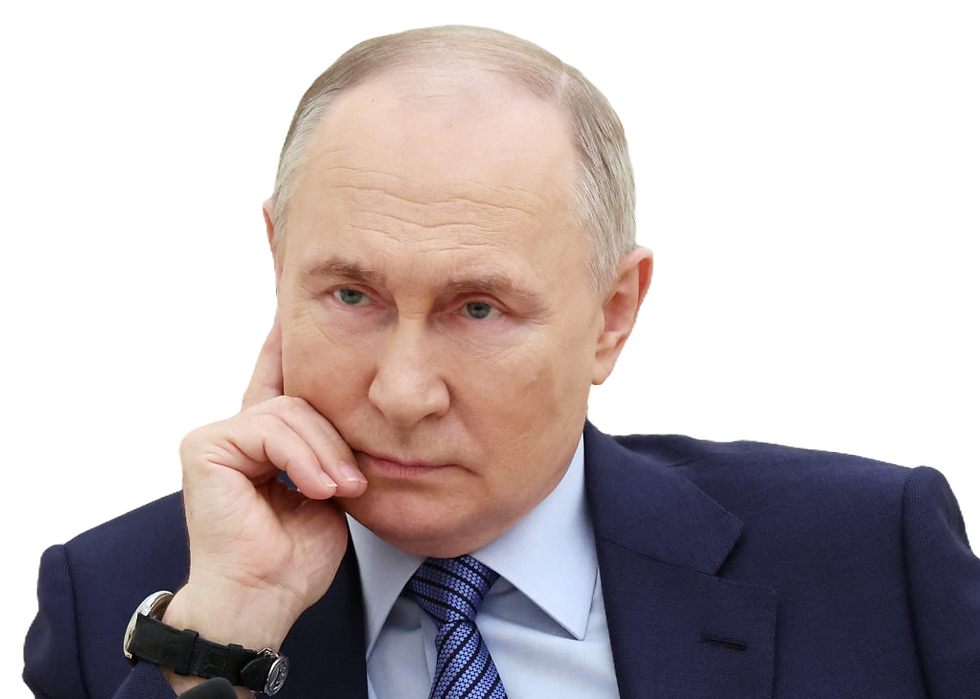Vladimir Putin: Portrait of a Dictator
- Matthew Parish
- Apr 14
- 3 min read

Vladimir Putin’s rise from a KGB intelligence officer to Russia’s longest-serving leader since Stalin is rooted in a life shaped by Cold War tensions, the collapse of the Soviet Union, and a determination to reassert Russia’s global influence. Born in 1952 in Leningrad (now St. Petersburg), Putin’s early life was marked by hardship, a strong sense of national identity, and a deep loyalty to the institutions of state power — particularly the security services.
His formative years in the KGB imbued him with a mindset focused on control, loyalty, secrecy, and Realpolitik. These values became central to his governance style after assuming the presidency in 2000.
Mechanisms of Authoritarian Control
Putin has maintained a tight grip on Russia’s political system through a combination of institutional, legal, and informal mechanisms:
1. Control of Media and Information: Independent journalism has been stifled, with state media playing a key role in shaping public opinion and suppressing dissent. The Kremlin’s narrative control has been instrumental in justifying domestic policies and foreign interventions.
2. Centralisation of Power: Power has been consolidated in the presidency, with Putin often shifting between the roles of president and prime minister to remain at the center of power. Regional governors are largely loyal appointees, and key political rivals have been sidelined or imprisoned.
3. Security Apparatus: The FSB (Federal Security Service), successor to the KGB, plays a central role in monitoring dissent and enforcing internal stability. The security services serve as both a tool of control and a pillar of Putin’s support.
4. Economic Patronage: Oligarchs who support the regime benefit from state contracts and legal protection, while those who oppose it face ruin. This creates a tightly knit elite network dependent on Putin’s favour.
5. Constitutional Amendments: In 2020, constitutional changes enabled Putin potentially to remain in power until 2036, reinforcing the perception of a system tailored to a single individual.
The Invasion of Ukraine: Geopolitical Ambition and Strategic Legacy
The decision to launch a full-scale invasion of Ukraine in 2022 appears motivated by several key goals:
• Reasserting Russian Dominance: Ukraine’s pivot toward NATO and the EU was perceived as a strategic threat. The Kremlin regards Ukraine as part of Russia’s historical and cultural sphere of influence.
• Dismantling Western Influence: Putin views the West as a geopolitical adversary. The war is part of a broader strategy to fragment Western alliances and assert multipolarity in global power structures.
• Securing a Place in History: Analysts suggest that Putin sees Ukraine as a cornerstone of his legacy — a final chapter in restoring what he views as Russia’s historical greatness.
From a leadership psychology perspective, this suggests a deeply strategic, legacy-oriented mindset, with long-term historical narratives playing as important a role as immediate military or economic considerations.
Succession and Stability
Russia’s political system has no clear succession plan. Potential successors range from technocrats to hardliners within the security establishment, including:
• Dmitry Medvedev (former president, now more hawkish)
• Sergei Shoigu (Minister of Defence)
• Nikolai Patrushev (Secretary of the Security Council)
• Younger technocrats like Moscow’s mayor Sergey Sobyanin
Many experts believe that a successor lacking Putin’s network of loyalty and personal authority could struggle to maintain the same level of centralised control, potentially leading to internal instability or policy shifts — including in Ukraine.
Europe’s Strategic Dilemma
With Russia’s military aggression showing few signs of abating, Europe faces a long-term challenge. While military deterrence remains crucial (via NATO reinforcement and arms support to Ukraine), other tools for resisting aggression include:
• Energy Independence: Severing economic ties with Russian hydrocarbons has already reduced Moscow’s leverage.
• Cybersecurity and Counter-Disinformation: Enhancing digital defences is vital to protecting democratic institutions.
• Support for Civil Society: Funding independent journalism, cultural exchange, and human rights groups helps support internal change within Russia.
A New Cold War?
The possibility of a frozen conflict — or even a partition of Ukraine reminiscent of Cold War Berlin — raises uncomfortable questions about the future of European security. Even if Putin achieves a ceasefire under advantageous terms, the geopolitical tensions fuelling the conflict will likely persist.
Europe must prepare not only for a long standoff but also for a future in which a weakened or unpredictable post-Putin Russia may emerge. Strategic patience, robust alliances, and long-term planning will be essential.
Conclusion
Vladimir Putin’s rule is defined by control, legacy, and a deeply ingrained sense of state power. His leadership has reshaped Russia’s place in the world — and led it into a prolonged confrontation with the West. Whether this trajectory continues will depend on both his endurance and the nature of his eventual successor. For Europe, the imperative remains to respond with strength, unity, and foresight, preparing for an era of both confrontation and potential transformation.




